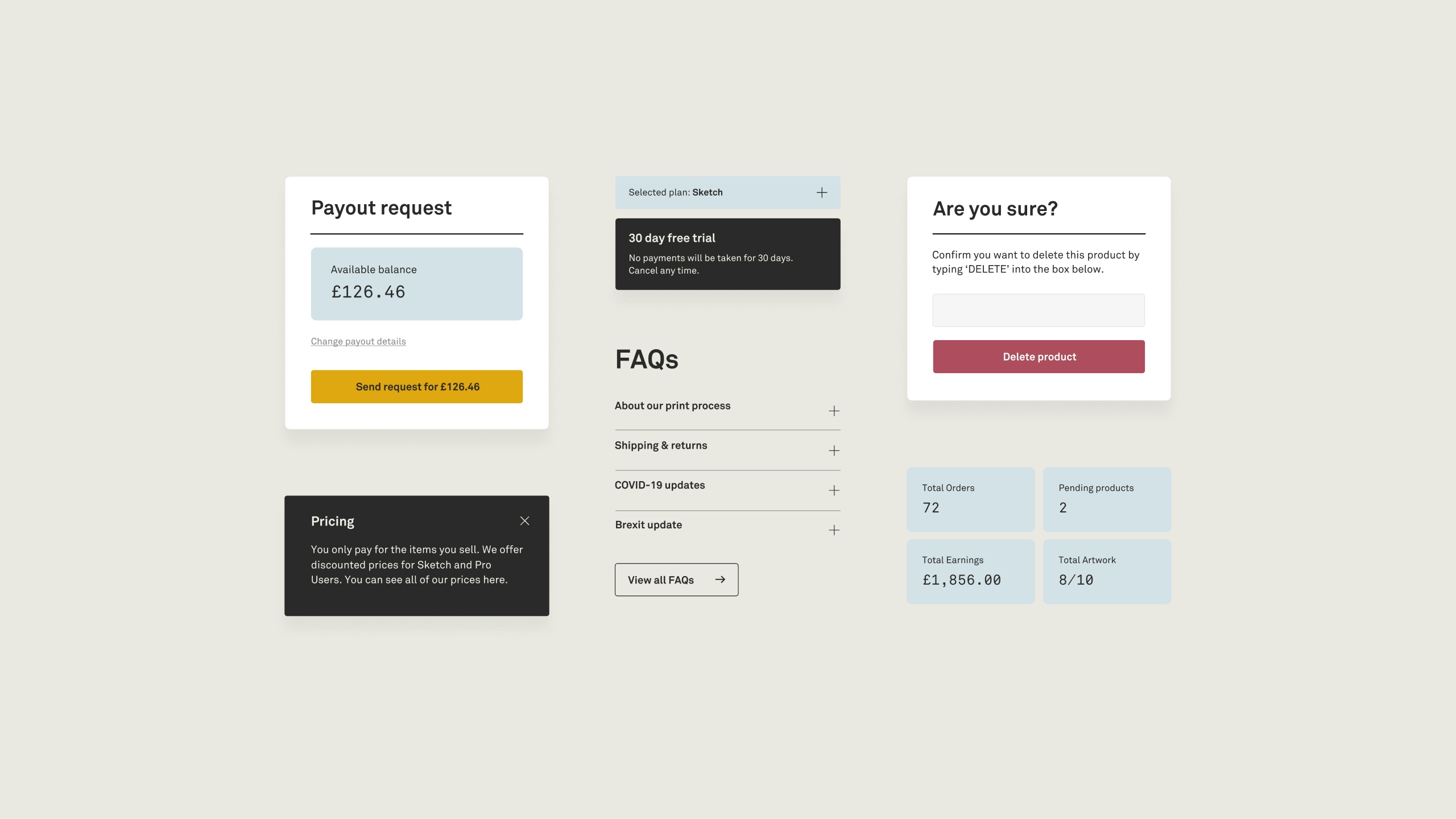The team at RoomFifty came to us with a realised vision for MakeRoom, and who it was for. The problem – enabling artists to sell their work in a way that was sustainable for them, but also accessible for their audience. The challenge was how to deliver this in a way that would be truly effortless for the artist. That’s where we came in. Working closely with them during the discovery process, we focused on the needs of their core users, as well as their internal processes around print and fulfilment. We used this insight to create a roadmap for the digital product development processes and guide initial user flows.
Room Fifty
A platform for artists to sell their work accessibly and sustainably
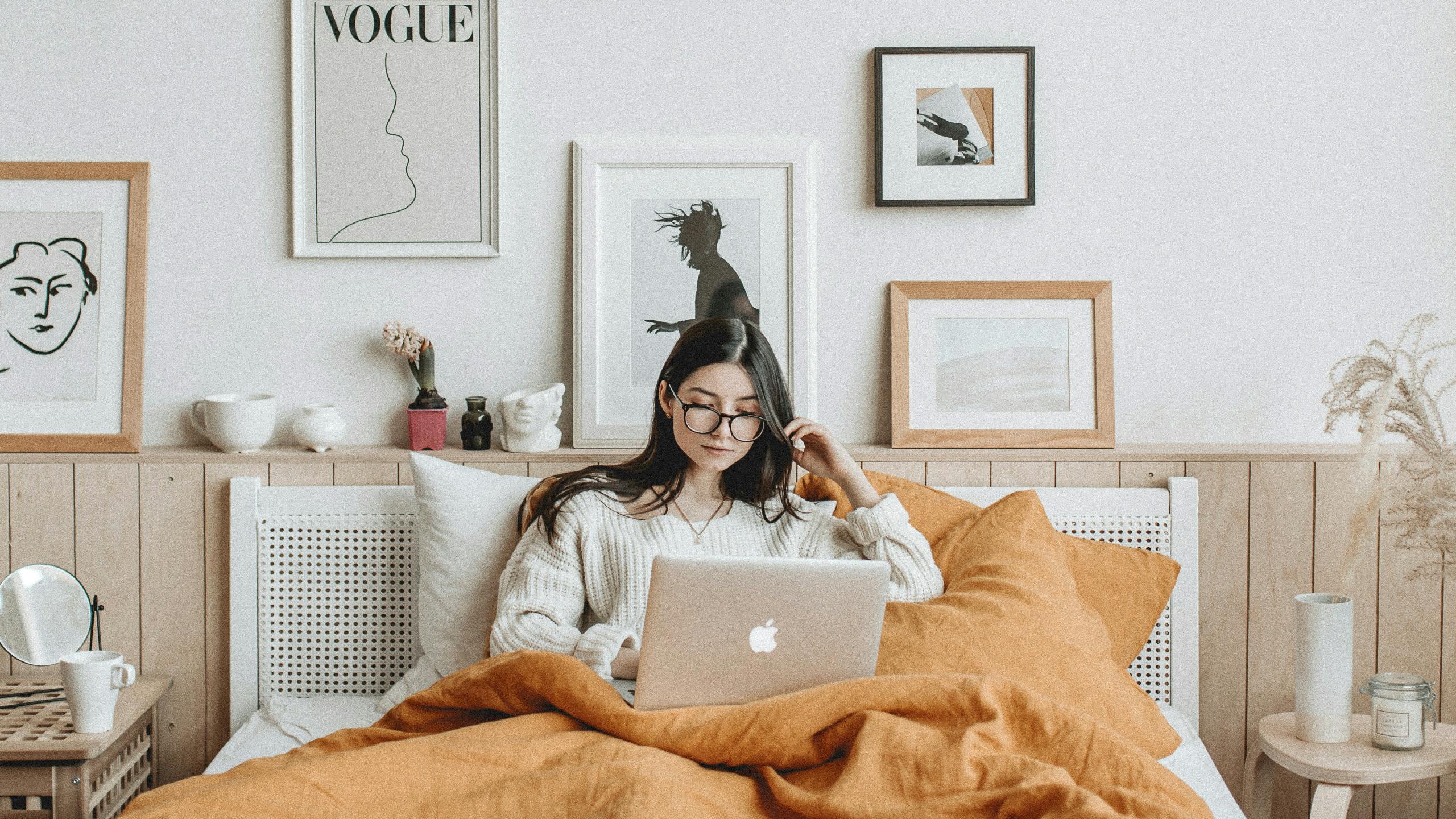
Client
Room Fifty
Deliverable
Digital Product
Timeframe
2 Months
Overview
RoomFifty is an independent print company making contemporary art affordable and accessible to everyone. Their online gallery promotes artwork from a carefully curated roster of 50 of the most exciting artists working today, who produce one exclusive image every season. RoomFifty is all about supporting hard-working artists while making great art accessible to the masses. With that in mind, they came up with the idea to launch MakeRoom – a platform that would allow artists to sell their work directly, without the hassle of material sourcing and fulfilment.
Deliverables
Custom web app
Customer portal
E-commerce intergration
Digital design system
Recognition
Honorable Mention
Unlocking the way forward
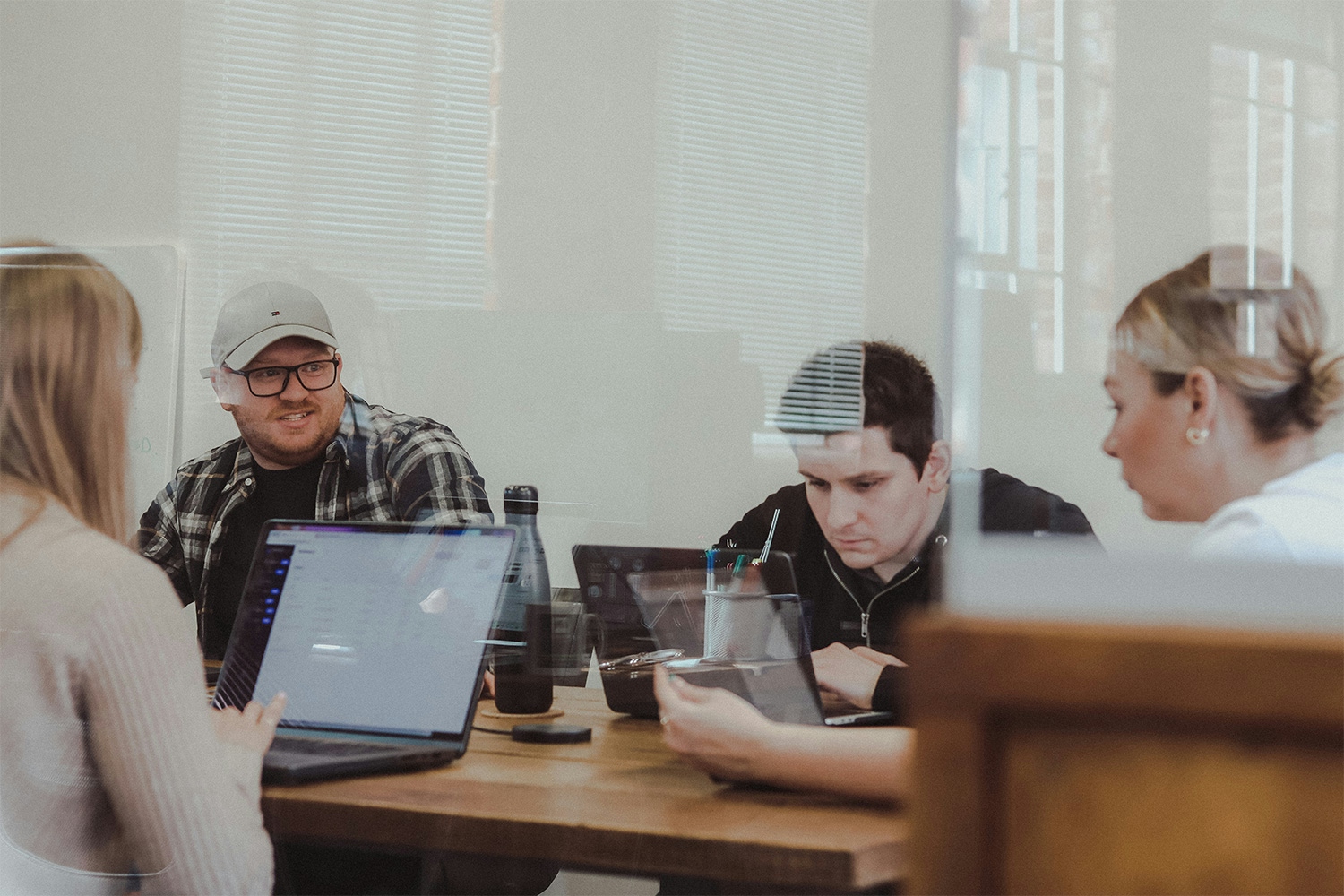
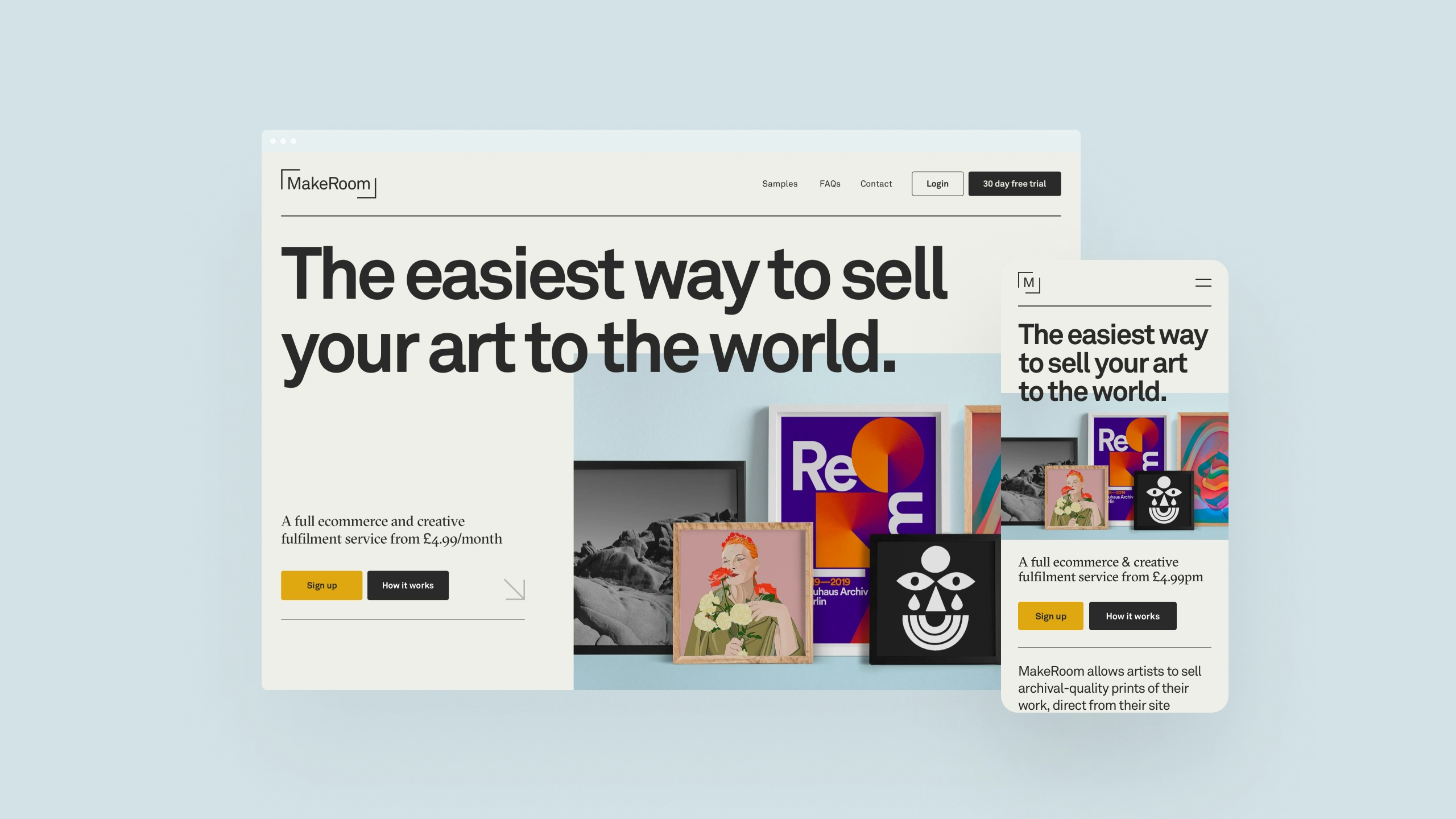
Creating effortlessness
A key focus for the platform was that it was incredibly usable and accessible for the artist. We created a clean and simple 3-step sign up funnel that would allow them to sign up for MakeRoom and get up and running quickly. The user is then guided through a setup process of uploading and pricing their artwork within the app, which is powered by Next.js and Shopify. Once set up is complete, the artist receives a simple embed code which they can include on their website – and the store is up and running. Payment is powered by Stripe, and printing and fulfilment is handled by our custom API, plugged directly into RoomFifty’s internal systems and processes.
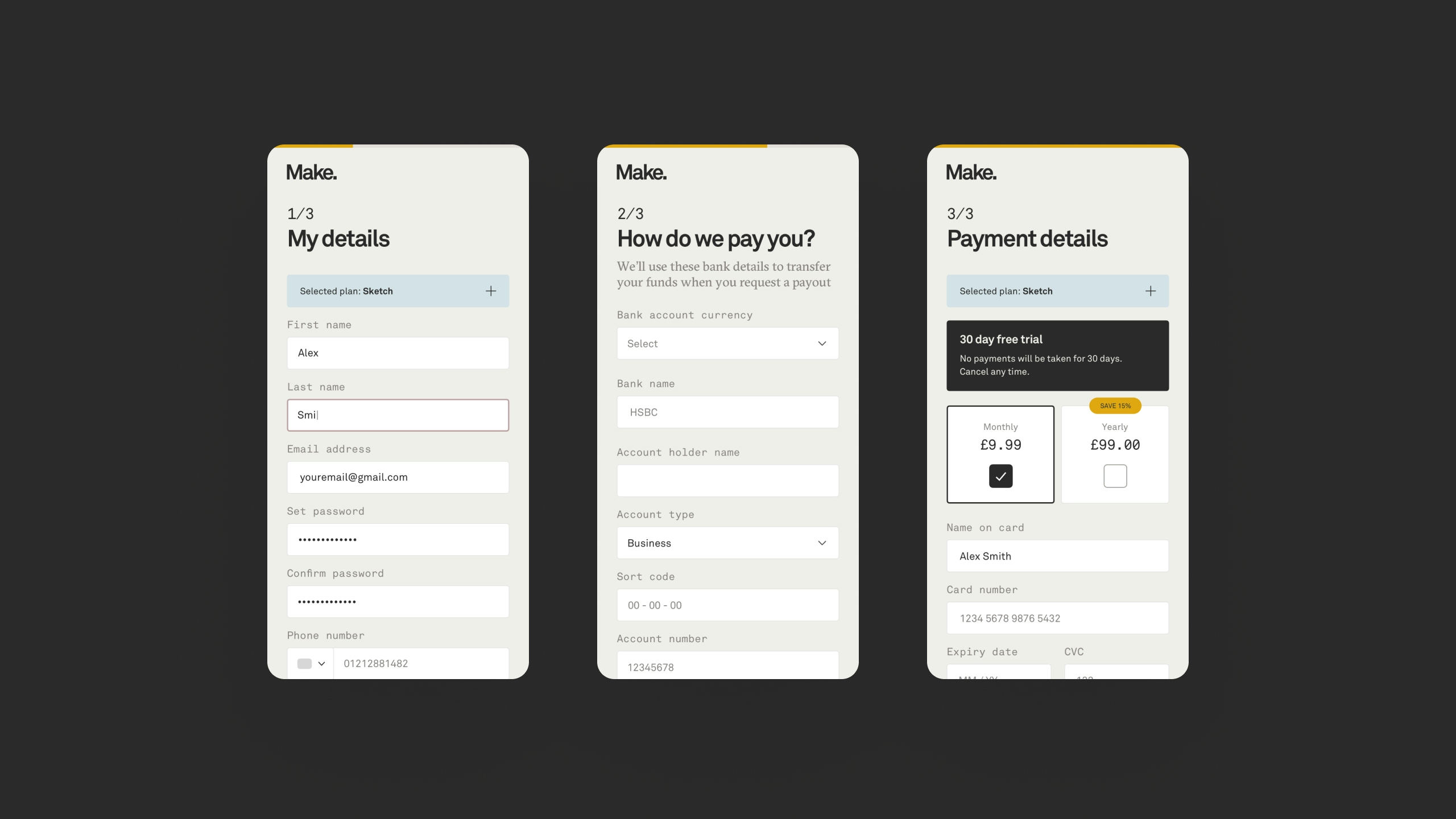
Control and visibility
It’s obviously vital that the artists using MakeRoom have complete visibility of how their store is performing, as well as control over adding new products. The sales dashboard allows them to view individual orders and total earnings, as well as granular detail on earnings for each product. From the dashboard they can also add new products, remove products, and process payouts of their earnings.
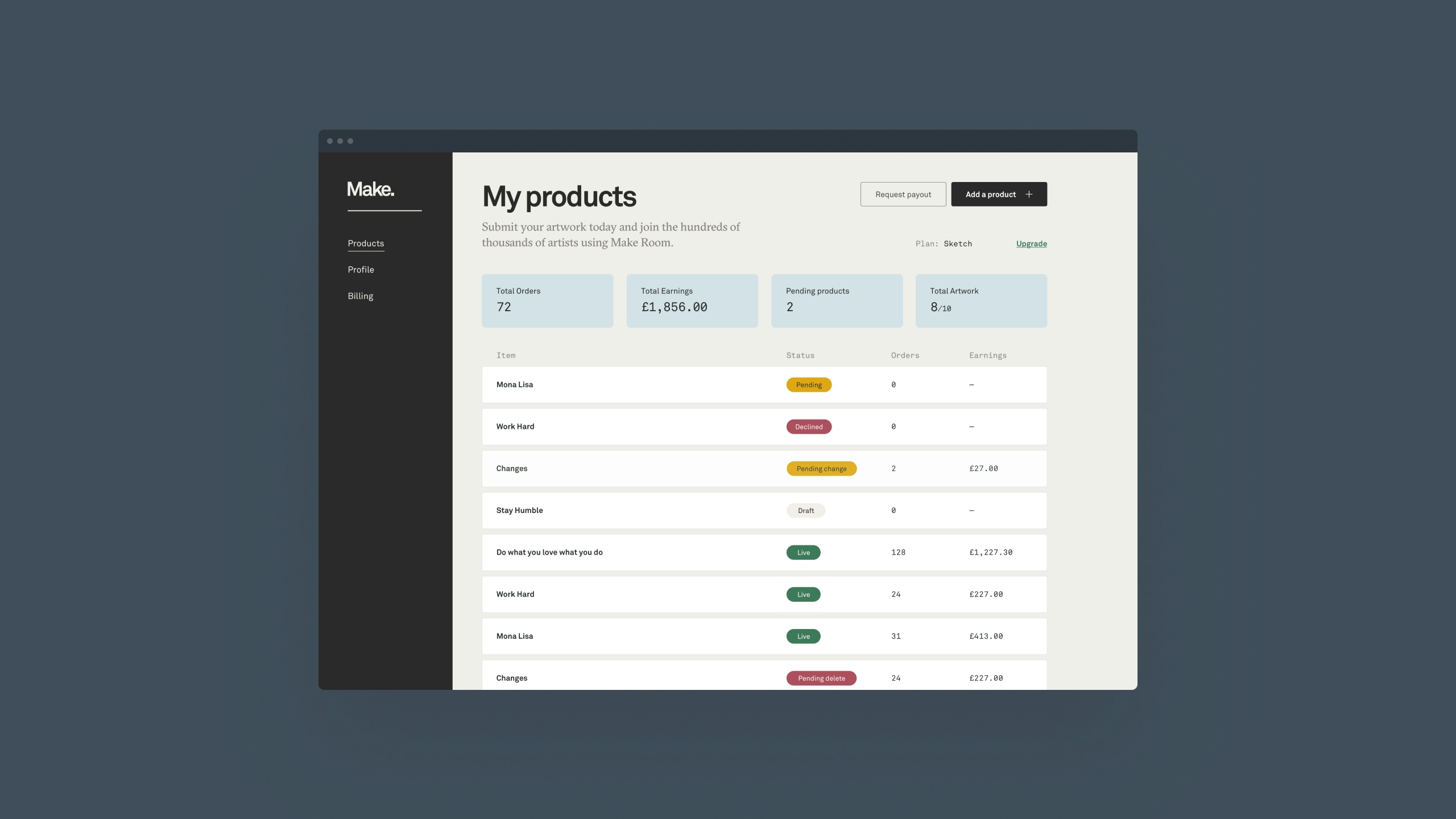
Making art accessible and sustainable
MakeRoom gives artists the tools and the power to focus on producing great and sharing it with people who love it – and leave behind complex processes, excessive fees and multiple third parties. It’s also carbon footprint conscious – hooked up via a print fulfilment API to a global network of printers, it’s able to identify and select printing and shipping closer to the end customer – drastically reducing the carbon footprint for the artist’s business.
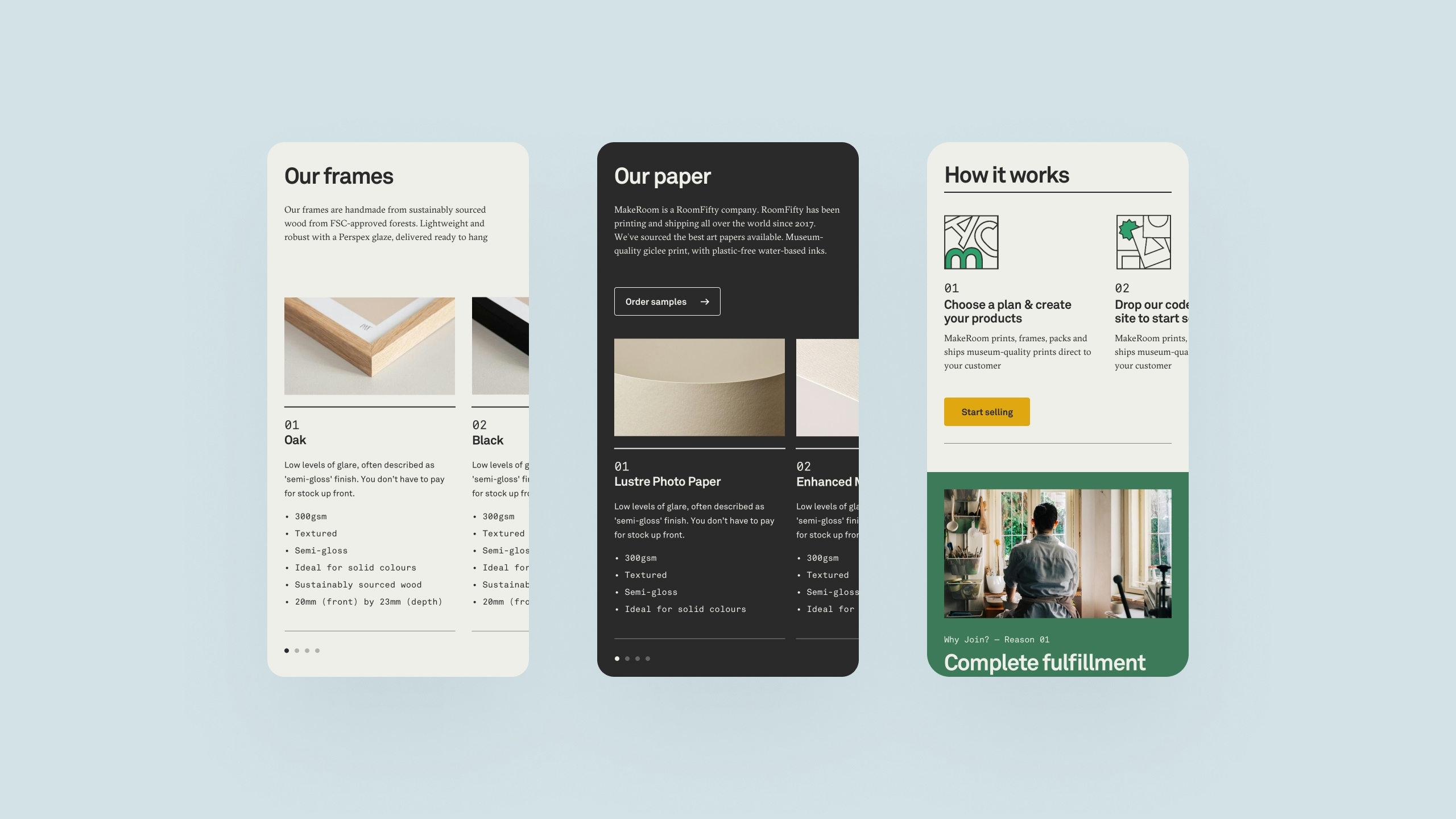
Simplifying product upload
To ensure an effortless experience, we created a simple user experience for product creation and artwork uploads. The platform allows artists to easily select the paper types and sizes they would like to be able to sell. Attached to all of these attributes are the production and fulfilment costs meaning the artist can set their sell price and see the profit each sale would make in real-time.
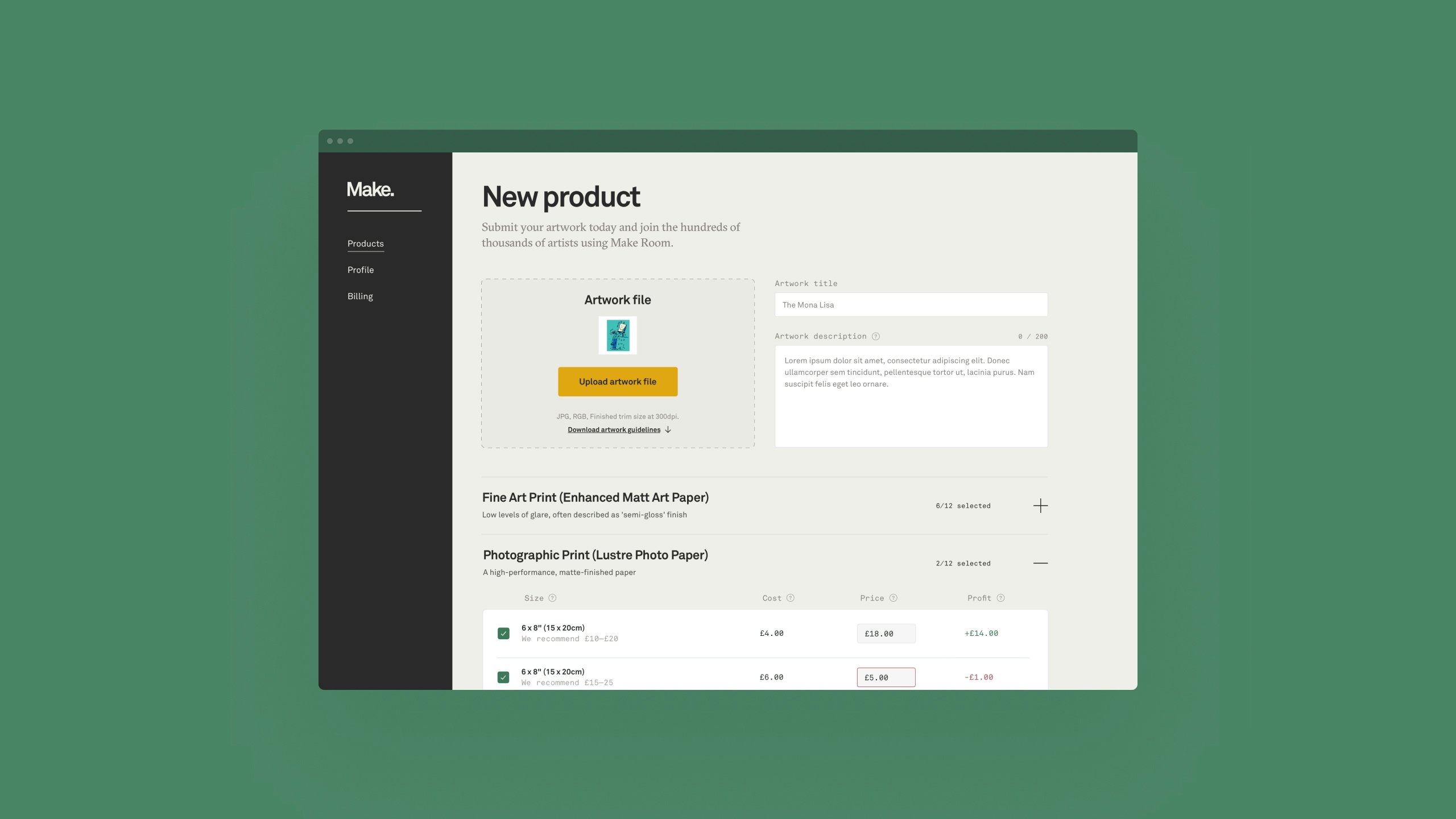
A consistent design language
To ensure the platform could evolve and scale as it gained more traction, we created a solid design system as a foundation for further growth. This includes everything from base styles and components to patterns and page templates, allowing for UX consistency with future features and functionality.
